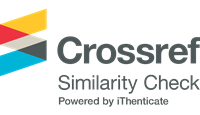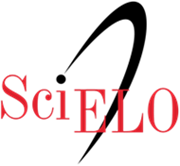<i>Eichhornia crassipes<i> biomass as a dietary supplement for <i>Pterophyllum scalare</i> (Schultze, 1823)
Resumo
Current study evaluates the macrophyte biomass of water hyacinth, Eichhornia crassipes, in diet food to improve the growth and survival of angelfish, Pterophyllum scalare. The liquid (extract) and ground modes are employed. Specific growth rate, weight gain, feed intake and final body weight in basal diet and macrophyte extract biomass diets were similar (p > 0.05). Fish survival was high in all dietary treatments (> 90%), while survival percentage of 100% was reported in ground macrophyte biomass treatment. Ground macrophyte biomass may be included in the diet of P. scalare up to 5%. The inclusion of E. crassipes in the diet of P. scalare proved similar or better results than basal diet. The macrophyte proved to be a food strategy in angelfish diets that may be implemented in the species’s diet at 32% levels of crude protein. The latter, easily found in tropical regions, affects directly the species’s growth and survival rates.
Downloads
Referências
Abdel-Tawwab, M. (2008). The preference of the Omnivorous–Macrophagous, Tilapia zillii (Gervais), to consume a natural free‐floating fern, Azolla pinnata. Journal of the World Aquaculture Society, 39(1), 104-112. doi: 10.1111/j.1749-7345.2008.00182.x.
Association Official Analytical Chemist [AOAC]. (2005). Official Methods of Analysis (18th ed.). Gaitherburg, MD: AOAC International.
Bataglia, O. C., Furlani, A. M. C., Teixeira, J. P. F., Furlani, P. R., & Gallo, J. R. (1983). Chemical analysis methods for plants. Boletim Técnico do Instituto Agronômico, 78, 48. doi: 10.1590/50006-87052004000200010.
Chavez, N. N. G., Ragaza, J. A., Corre Jr, V. L., Serrano Jr, A. E., & Traifalgar, R. F. M. (2016). Effects of water hyacinth (Eichhornia crassipes) leaf protein concentrate as soybean protein replacement in white shrimp Litopenaeus vannamei (Boone) postlarvae diet. Aquaculture Research, 47(8), 2642-2649. doi: 10.1111/are.13306.
El-Sayed, A.-F. M. (2003). Effects of fermentation methods on the nutritive value of water hyacinth for Nile tilapia Oreochromis niloticus (L.) fingerlings. Aquaculture, 218(1-4), 471-478. doi: 10.1046/j.1365-2109.2001.00535.x.
Francis, G., Makkar, H. P. S., & Becker, K. (2001). Antinutritional factors present in plant-derived alternate fish feed ingredients and their effects in fish. Aquaculture, 199(3-4), 197-227. doi: 10.1046/j.1365-2109.2001.00535.x.
Golterman, H. L., Clymo, R. S., & Ohnstad, M. A. M. (1978). Methods for Physical and Chemical Analysis of Fresh Waters. Oxford, UK: Blackwell.
Hasan, M. R., & Chakrabarti, R. (2009). Floating aquatic macrophytes: water hyacinths. FAO Fisheries and Aquaculture Technical Paper, 531.
Islam, M. A., Asadujjaman, M., Biswas, S., Manirujjaman, M., Rahman, M., Hossain, M. A., & Munira, S. (2015). Determination of protein, lipid and carbohydrate contents of conventional and non-conventional feed items used in Carp polyculture pond. Journal of Aquaculture Research & Development, 6(2), 109-113. doi: 10.4172/2155-9546.1000301.
Koca, B. S., Diler, I., Dulluc, A., Yigit, N. O., & Bayrak, H. (2009). Effect of different feed types on growth and feed conversation ratio of angel fish (Pterophyllum scalare Lictenstein, 1823). Journal of Applied Biological Sciences, 3(2), 7-11.
Koroleff, F. (1976). Determination of nutrients. In E. Grasshof & E. Kremling (Eds.), Methods of sea water analysis. New York, NY: Verlag Chemie Weinhein.
Kumar, S., Choudhury, D., Baruah, K., Biswal, M., Umesha, D., & Sahu, N. (2005). Effect of feeding three different formulated feeds having different protein levels on the growth of angel fish (Pterophyllum scalare) juveniles. Journal of the Indian Fisheries Association, 32, 95-101.
Lee, S. W., Farid, M. R., Wendy, W., & Zulhisyam, A. K. (2016). Water hyacinth, Eichhornia crassipes (Mart.), leaf as an alternative protein source for Siamese Gourami, Trichogaster pectoralis. Internatioal Journal of Aquatic Sciences, 7(2), 58-62.
Mohapatra, S. B. (2015). Utilization of water hyacinth (Eichhornia crassipes) meal as partial fish protein replacement in the diet of Cyprinus carpio fry. European Journal of Experimental Biology, 5(5), 31-36.
National Research Council [NRC]. (2011). Nutrient Requirements of Fish and Shrimp (7th rev. ed.). Washington, DC: National Academies Press.
Patra, S., & Ghost, T. K. (2015). Larval rearing of freshwater angelfish (Pterophyllum scalare) fed on different diets. Journal of Agricultural and Veterinary Science, 8(6), 6-11.
Pillans, R. D., Franklin, C. E., & Tibbetts, I. R. (2004). Food choice in Siganus fuscescens: influence of macrophyte nutrient content and availability. Journal of Fish Biology, 64(2), 297-309. doi: 10.1046/j.1095-8649.2003.00261.x.
Sipaúba-Tavares, L. H., & Braga, F. M. S. (2007). The feeding activity of Colossoma macropomum larvae (tambaqui) in fishponds with water hyacinth (Eichhornia crassipes) fertilizer. Brazilian Journal of Biology, 67(3), 459-466. doi: 10.1590/1519-6984.
Sipaúba-Tavares, L. H., Ibarra, L. C. C., & Fioresi, T. B. (2009). Ankistrodesmus gracilis (Reisch) Korsikov (Chlorophyta) laboratory cultured in CHU12 and macrophyte with NPK media. Boletim do Instituto de Pesca, 35(1), 111-118. doi: 10.5007/1678-2305.2009v35n1p111.
Sipaúba-Tavares, L. H., Segali, A. M. D. L., & Scardoelli-Truzi, B. (2015). Aquatic Plants: Alternative Medium for Microalgae growth. Annals of Aquaculture and Research, 2(1), 1009-1011.
Sirakov, I., Velichkova, K., Stoyanova, S., Dinev, D., & Staykov, Y. (2015). Application of natural zeolites and macrophytes for water treatment in recirculation aquaculture systems. Bulgarian Journal of Agricultural Science, 21(1), 147-153.
Sithara, K., & Kamalaveni, K. (2008). Formulation of low-cost feed using azolla as a protein supplement and its influence on feed utilization in fishes. Current Biotica, 2(2), 212-219.
Sotolu, A. O., & Sule, S. O. (2011). Digestibility and performance of water hyacinth meal in the diets of African catfish (Clarias gariepinus; Burchell, 1822). Tropical and Subtropical Agroecosystems, 14(1), 245-250.
Tamaru, C. S., & Ako, H. (1999). Using commercial feeds for the culture of freshwater ornamental fishes in Hawaii. Technical Report, 28(1), 109-119.
Tham, H. T. (2016). Utilisation of water hyacinth as animal feed. Nova Journal of Engineering and Applied Sciences, 4(1), 1-6.
Velásquez, Y. C., Kijora, C., Wuertz, S., & Schulz, C. (2015). Effect of fermented aquatic macrophytes supplementation on growth performance, feed efficiency and digestibility of Nile Tilapia (Oreochromis niloticus) juveniles fed low fishmeal diets. Livestock Research for Rural Development, 27(9).
Yousefian, M., Gharaati, A., Hadian, M., Hashemi, S. F., Navazandeh, A., & Molla, A. (2012). Food requirements and dietary in aquarium fish. International Journal of Plant, Animal and Environmental Sciences, 2(3), 112-120. doi: 10.21276/Ijpaes.
DECLARAÇÃO DE ORIGINALIDADE E DIREITOS AUTORAIS
Declaro que o presente artigo é original, não tendo sido submetido à publicação em qualquer outro periódico nacional ou internacional, quer seja em parte ou em sua totalidade.
Os direitos autorais pertencem exclusivamente aos autores. Os direitos de licenciamento utilizados pelo periódico é a licença Creative Commons Attribution 4.0 (CC BY 4.0): são permitidos o compartilhamento (cópia e distribuição do material em qualqer meio ou formato) e adaptação (remix, transformação e criação de material a partir do conteúdo assim licenciado para quaisquer fins, inclusive comerciais.
Recomenda-se a leitura desse link para maiores informações sobre o tema: fornecimento de créditos e referências de forma correta, entre outros detalhes cruciais para uso adequado do material licenciado.








































